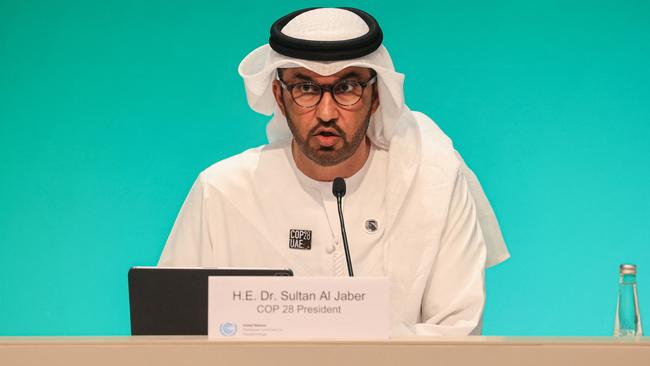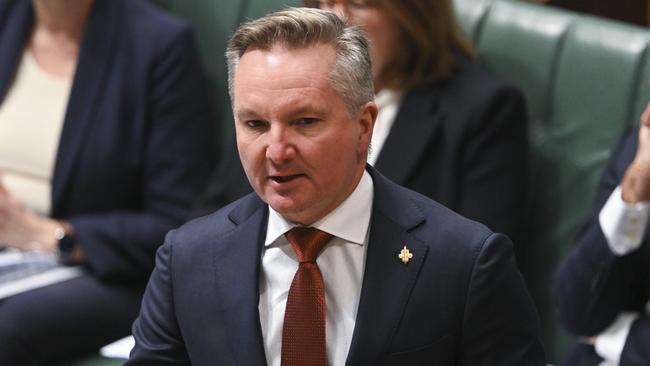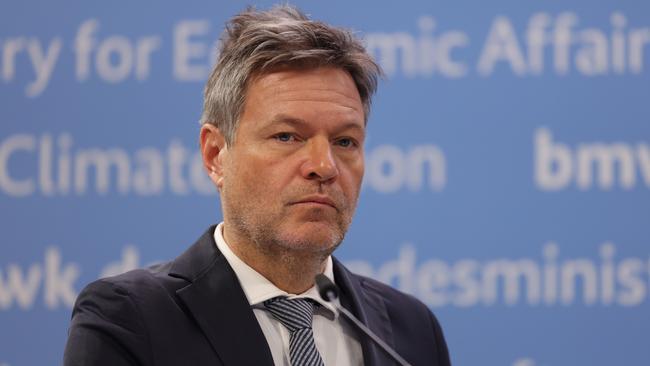Journalists failing to report the unpalatable truths of energy and renewables industries


Why did so few environment reporters even mention the most important story in the lead-up to the COP28 conference being held in Dubai?
On November 30, the US Energy Information Administration reported global CO2 emissions would rise by up to 34 per cent between now and 2050. Its most optimistic estimate was a fall of less than 2 per cent.
Coal use would rise in electricity generation, particularly in India. Natural gas use in power generation would rise globally, as it would in chemical production.
The US would remain the biggest gas user while Middle East gas consumption would rise between 29 and 54 per cent between 2022 and 2050. Liquid fuel consumption would continue to rise until 2050.
Thank God our ABC 7.30 was able to confirm with Climate Change and Energy Minister Chris Bowen last Thursday week that Australia is on track to reduce emissions by 42 per cent by 2030.
With 1.1 per cent of global emissions, that will really make a difference. Not.
In various lead-up statements to the COP, senior ministers from Oman, Saudi Arabia, China and India all cast doubts on the global push to end fossil fuel use. Apart from Guardian Australia, much of the left media ignored those statements.
COP28 host country the United Arab Emirates has announced its state-owned oil firm, Adnoc, will increase oil output by 7 per cent over the next four years. The BBC reported last Monday that by 2050, UAE would still be producing 850 million barrels of oil per year, down slightly from its present 1 billion barrels annually.
COP president, UAE’s Sultan Al-Jaber, head of Adnoc, even claimed there was no science to prove a phase-out of oil was needed to limit global temperature rises to 1.5C.
The Guardian on December 3 reported Al-Jaber saying a phase-out of fossil fuels would not allow sustainable development “unless you want to take the world back to the caves”.
Reuters on December 5 reported work from the independent data consortium Net Zero Tracker, which includes Oxford University. It shows that 69 of the world’s oil producers have pledged to reach net zero emissions but “only Denmark, Spain and France have set out plans to eventually stop drilling”.

While climate writers here often discuss expanding renewable power generation in India and China, the unarguable truth is both countries are increasing construction of coal-fired power plants and expanding their domestic thermal coal production.
India is now the world’s No. 3 emitter. Its Minister for Power, R. K. Singh, said on November 6: “Our point of view is that we are not going to compromise with the availability of power for growth.”
S & P Global reported on November 29 that India was generating 149.66 terawatt hours of electricity by the end of September, 73 per cent of it from coal. That figure would rise to 77 per cent by 2025 before falling to “71 per cent in 2030 and 52 per cent by 2050”. S & P said public power companies were building 27 gigawatts of extra thermal power, almost all coal. It quoted Singh saying that would need to rise to an extra 80gW.
China, recovering from Covid lockdowns, plans to lift coal and gas power production. OilPrice.com says China expects peak winter power demand this year to rise by 12.1 per cent, or 140gW.
During the first half of 2023, OilPrice says, China approved more than 50gW of new coal power, expanded domestic coal output by 3 per cent and lifted gas imports by 11 per cent.
So if the world is struggling to wean itself off fossil fuels, how is the transition to renewables going? It’s going well for China, which makes most of the world’s wind turbines, solar panels and lithium-ion batteries, but the prognosis is not so good in Europe and the US.
Germany’s Greens Party Minister for Economics, Robert Habeck, told Bild am Sonntag last week that Germany would have to delay phasing out coal. Chancellor Olaf Scholz’s coalition government had planned to bring forward the end of coal from 2038 to 2030.
German Finance Minister Christian Lindner, from the Free Democrats Party, said now was not the time to be shutting down power plants. Lindner wants Germany to lean more heavily on domestic gas.
German industry has been hard hit by power price rises since the Russian invasion of Ukraine. The industrial powerhouse of Europe risks deindustrialisation as large manufacturing and chemical companies move to China, or to the US to take advantage of environmental incentives there under President Joe Biden’s Inflation Reduction Act.
Germany’s biggest car marker, Volkswagen, has flagged a €10bn ($16.43bn) redundancy package with its workforce.
It is struggling to transition from internal combustion engines to electric vehicles.

Bloomberg reported on August 29 that a third of German manufacturers are considering shifting their production offshore.
Domestic consumers are also facing cutbacks. Residential power grid operators, according to Euractive.com, will next year “be empowered to restrict the flow of power to heat pumps and electric vehicle chargers … to preserve the stability of the grid”.
Despite initial optimism in the US about Biden’s environmental package, things there are not rosy either.
Wrote Bloomberg on November 29: “Some of the nation’s most ambitious renewable power projects have been shelved, electric car sales are missing targets and investors are fleeing the sector in droves. The result is a $US30bn collapse in US clean energy stocks in the past six months.”
A quarter of the value of US companies “in the S&P Global Clean Energy Index’’ had evaporated in the six months to November 27.
The Daily Mail in London reported on November 29 that global ESG (environment, social and governance) assets had collapsed by $5 trillion in the past two years.
“In the US, where Republicans have railed against ESG funds … such assets plunged from more than $US17 trillion to $US8.4 trillion” in the period.
But in Australia, industry superannuation funds and the federal government are looking at changing superannuation rules to allow big funds – often dominated by former trade union officials and former Labor politicians – to invest more of members’ money in Australian renewable energy projects. It could be a disaster for retirees.
Finally, it’s worth looking at the economics of climate action.
Copenhagen Consensus president Bjorn Lomborg in The Wall Street Journal on November 29 discussed two new studies published in the journal Climate Change Economics.
A paper by Richard Tol says meeting 1.5C of warming would prevent the loss of 0.5 per cent of global annual GDP by 2050 and a loss of 3.1 per cent by 2100. But meeting the 1.5C Paris target would cost 4.5 per cent of GDP each year until mid-century and 5.5 per cent by 2100.
“This means the likely climate policy costs will be much higher than the likely benefits for every year throughout this century and into the next,” Lomborg wrote.
The prognosis in the second peer-reviewed study from economists at Massachusetts Institute of Technology was even more negative.






The failure of some journalists to report what is really happening globally in fossil fuel consumption and renewable energy generation is a scandal.